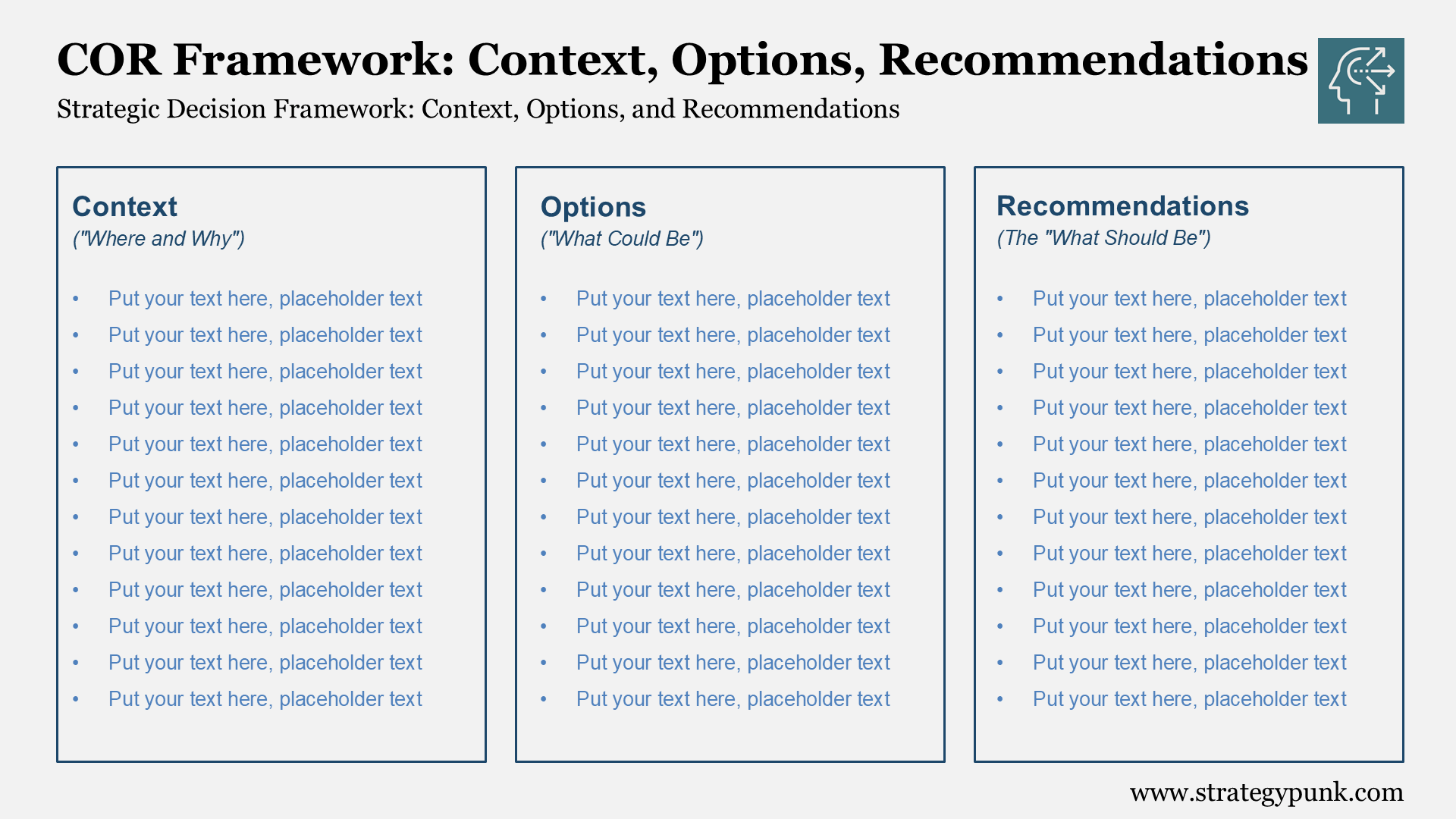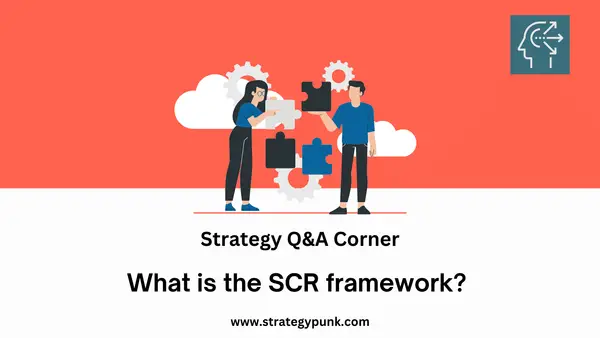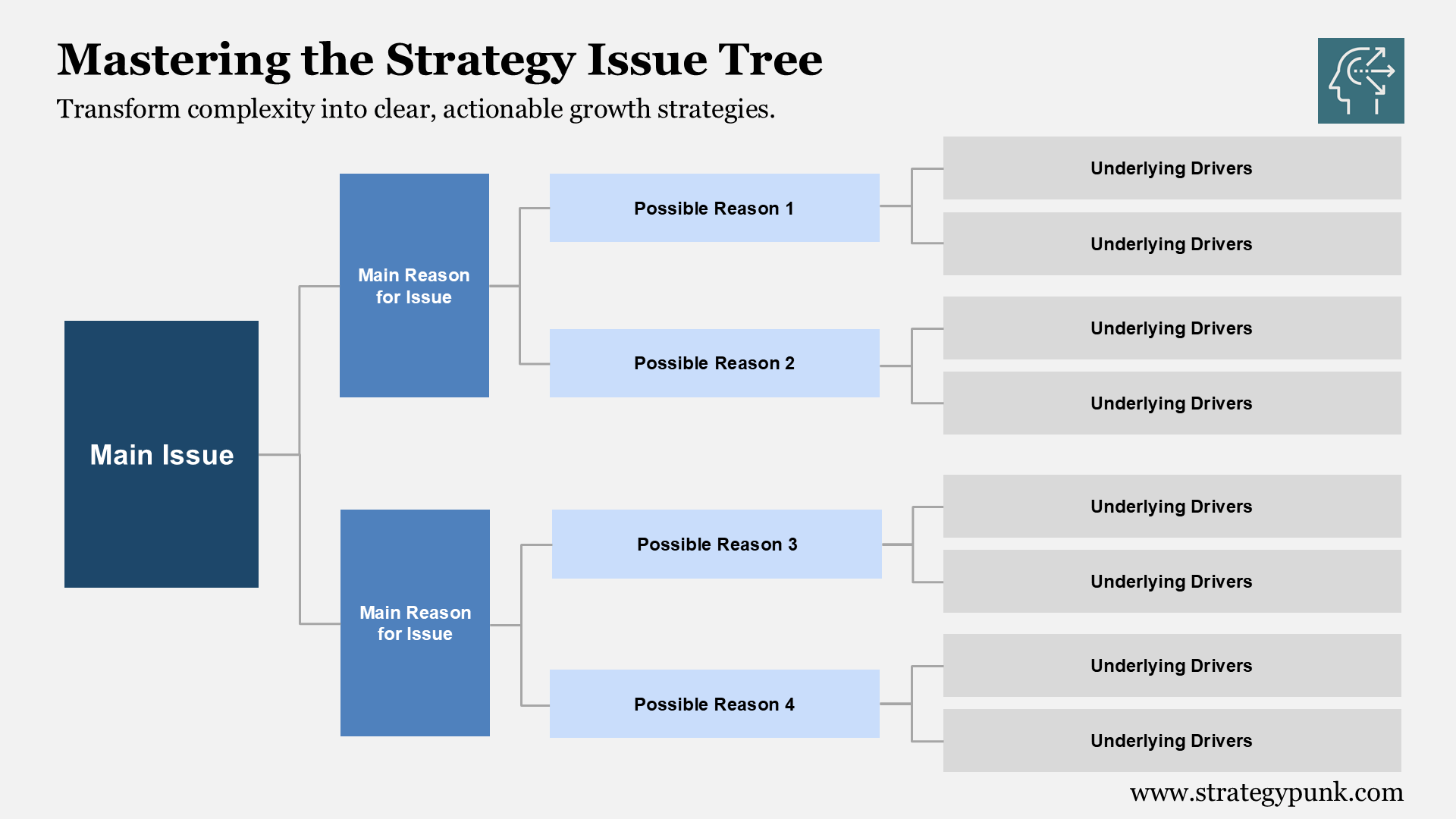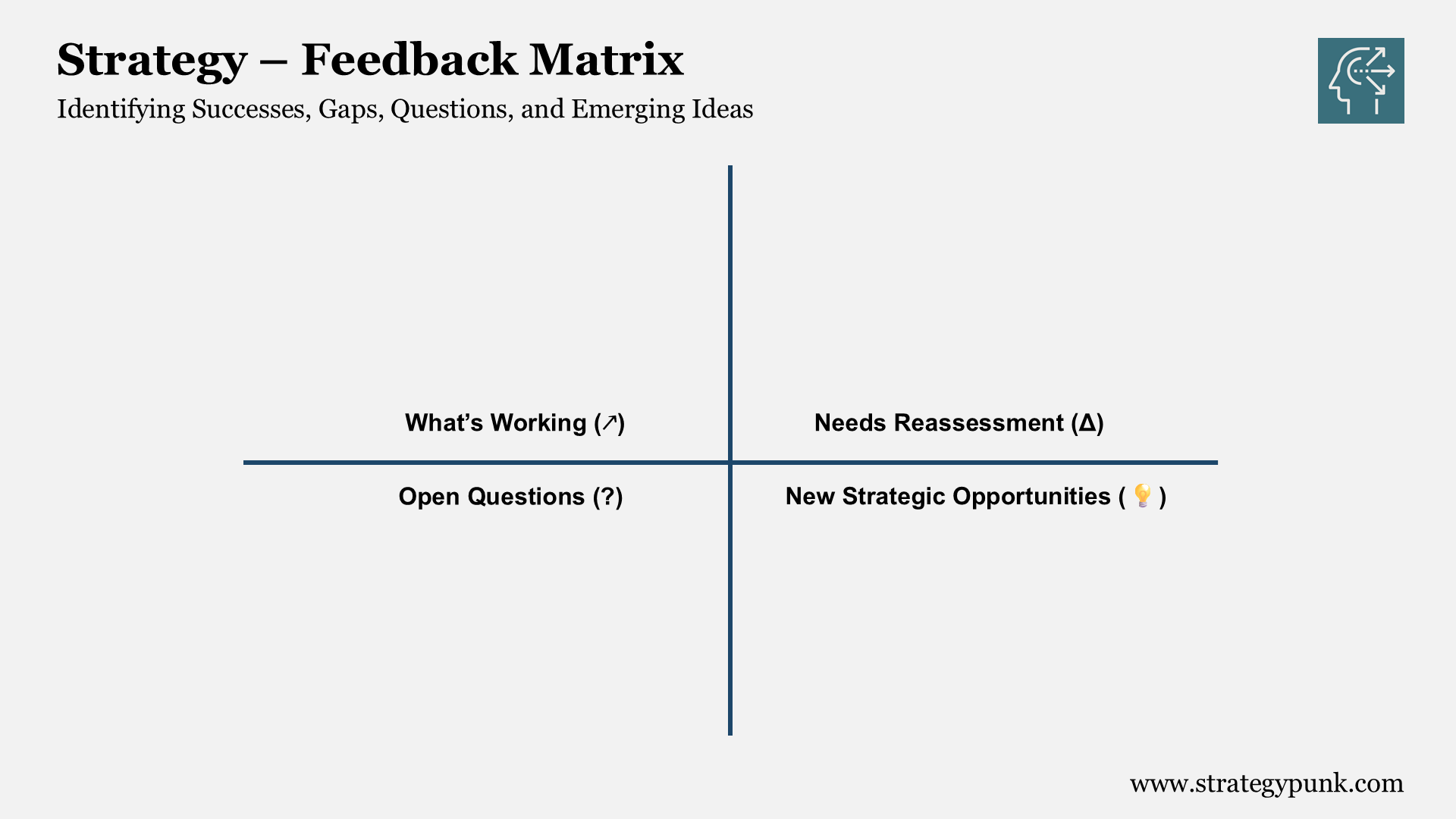A Step-by-Step Guide to Develop and Implement Effective Strategies (FREE PPT Template)
Discover the power of effective strategy development with our step-by-step guide and FREE PPT template. This comprehensive resource will walk you through the process of developing and implementing a winning strategy.
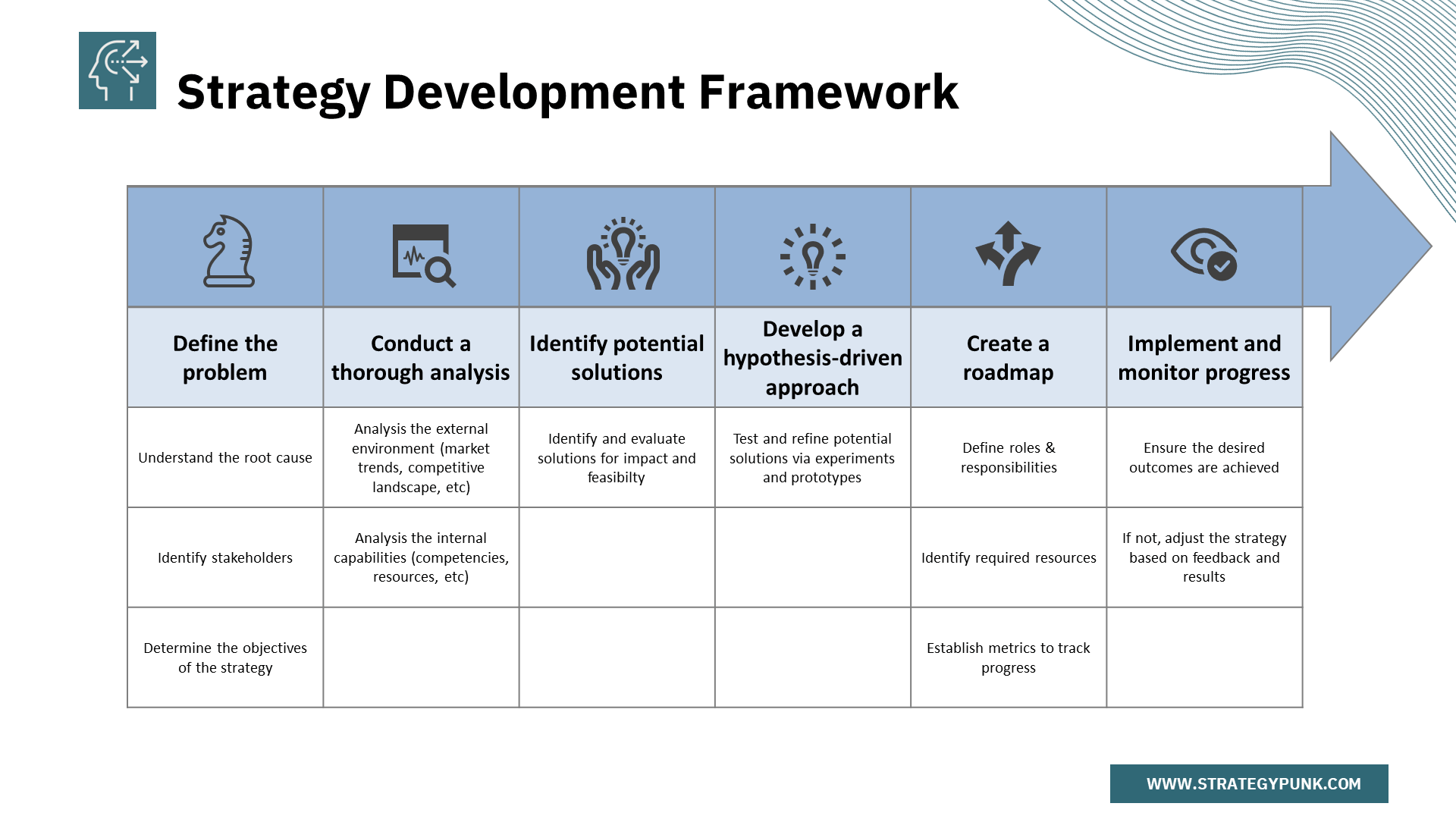
Are you looking to develop a winning strategy for your organization? Our strategy Development Framework can help.
Imagine this: you're the CEO of a thriving company, but you've hit a roadblock.
Your competitors are gaining ground, and your once-in-novative products are starting to feel stale.
It's time for a change, but where do you begin?
The answer lies in developing and implementing an effective strategy.
Strategies are the backbone of any successful organization. They provide a clear direction, align resources, and help you stay ahead of the curve. However, creating a strategy is easier said than done. It requires a deep understanding of your business, customers, and the ever-changing market landscape.
This comprehensive guide will walk you through a step-by-step process to develop and implement effective strategies that drive growth and success. Buckle up because we're about to embark on a journey that will transform how you approach strategic planning.
Our template can help you analyze your organization's effectiveness, allocate resources effectively, and ensure all elements are aligned to support your strategy.
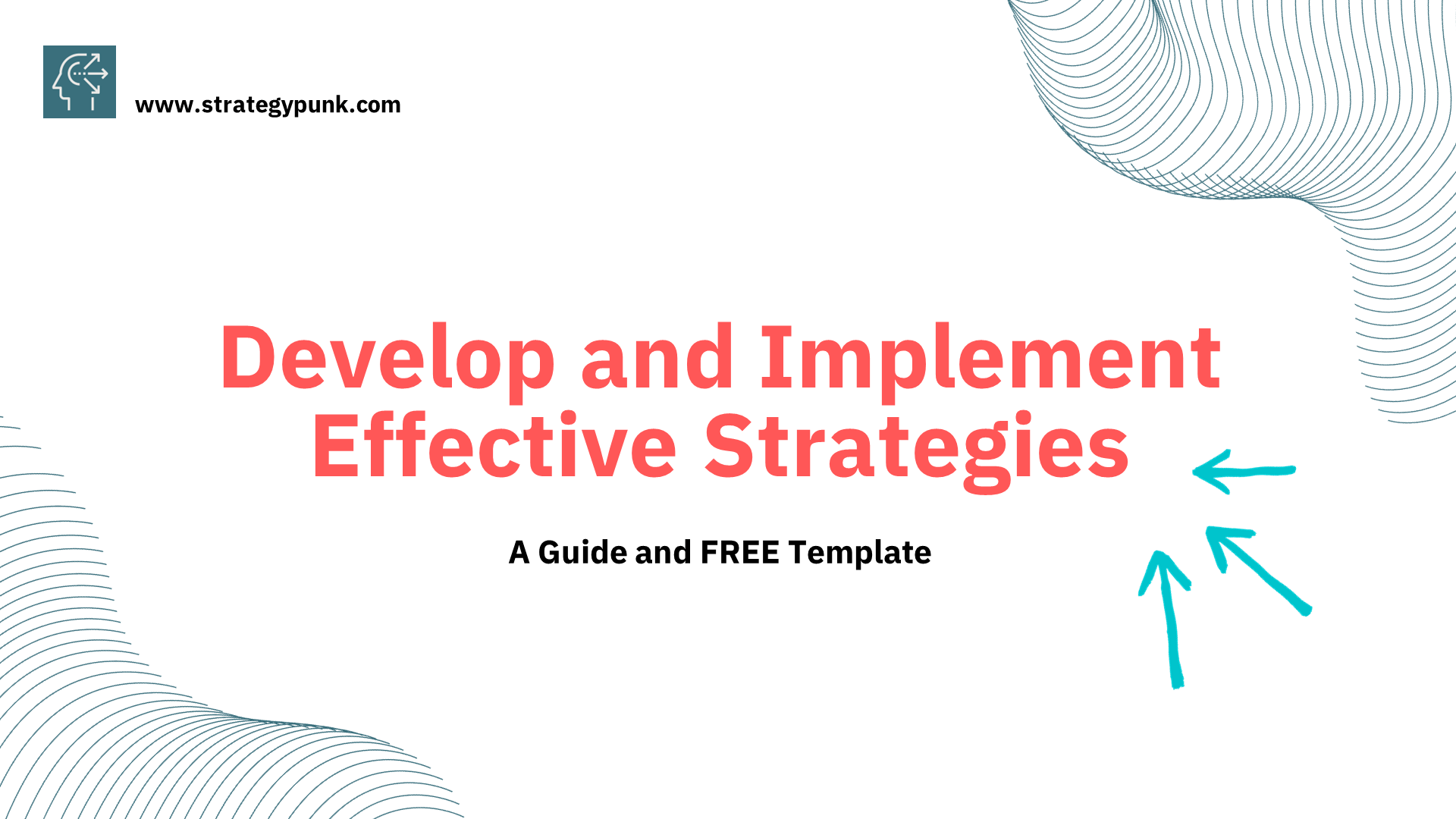
How to Develop and Implement Effective Strategies?
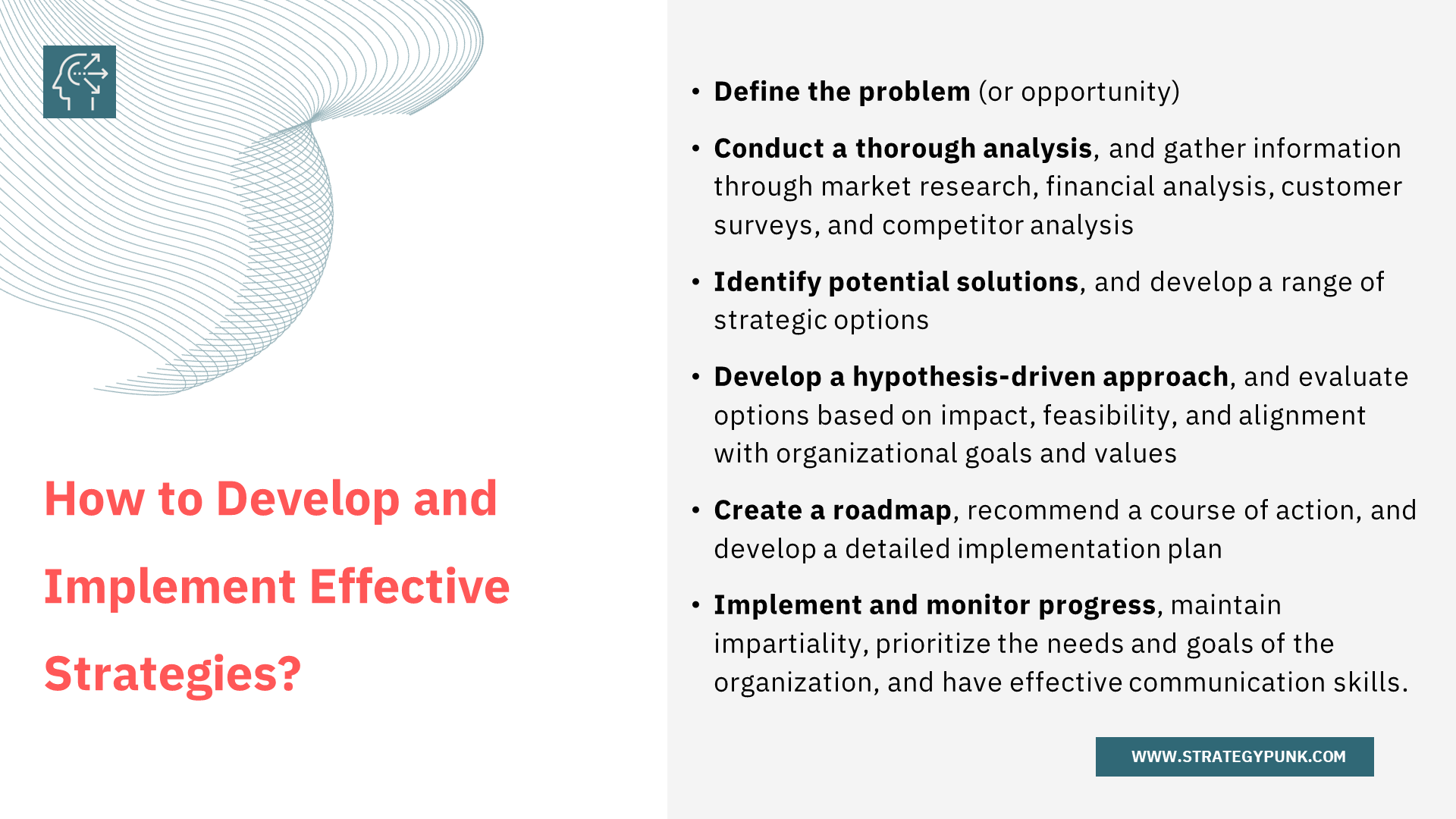
- Define the problem (or opportunity)
- Conduct a thorough analysis and gather information through market research, financial analysis, customer surveys, and competitor analysis
- Identify potential solutions and develop a range of strategic options
- Develop a hypothesis-driven approach and evaluate options based on impact, feasibility, and alignment with organizational goals and values
- Create a roadmap, recommend a course of action, and develop a detailed implementation plan
- Implement and monitor progress, maintain impartiality, prioritize the needs and goals of the organization, and have practical communication skills.
Strategy Development Framework: 6 Key Steps to develop and implement effective strategies
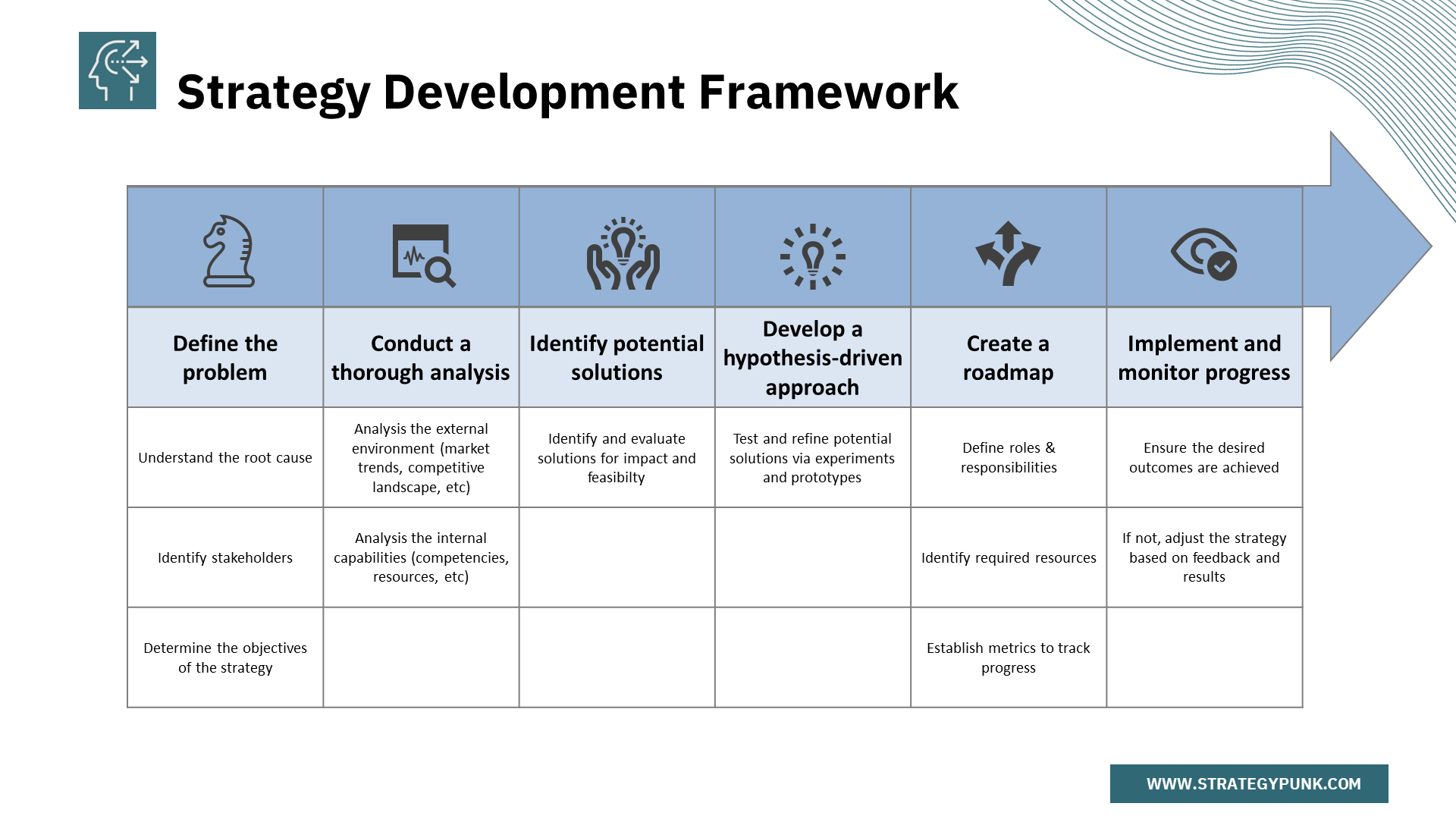
Define the problem (or opportunity)
The first step in any strategic planning process is clearly defining your problem or opportunity. Although this may seem obvious, it's often overlooked or oversimplified.
Ask yourself: What's keeping you up at night? Is it a declining market share, a disruptive technology, or a shift in customer preferences? Or you've identified an untapped opportunity that could propel your business to new heights.
Articulating the problem or opportunity is crucial because it sets the stage for the rest of the process. It helps you focus your efforts and ensures everyone is on the same page.
Conduct a thorough analysis.
Once you've defined the problem or opportunity, it's time to gather information. This is where the real work begins.
Market research: Understand your target market, needs, and behaviors. Conduct surveys and focus groups and analyze industry trends to gain valuable insights.
Financial analysis: Dive deep into your financial data. Analyze your revenue streams, costs, and profitability. Identify areas for improvement and potential growth opportunities.
Customer surveys: Your customers are the lifeblood of your business. Gather feedback through surveys, interviews, and social media listening to understand their pain points, preferences, and expectations.
Competitor analysis: Monitor your competitors closely. Analyze their strategies, strengths, and weaknesses. Identify areas where you can differentiate yourself and gain a competitive advantage.
This step is crucial because it provides the foundation for your strategic decisions. The more information you have, the better equipped you'll be to develop effective strategies.
Identify potential solutions
With a wealth of information at your fingertips, it's time to start brainstorming potential solutions and strategic options.
Encourage creativity and unconventional thinking. Do not limit yourself to obvious solutions; instead, explore various options, from incremental improvements to disruptive innovations.
Consider different approaches, such as:
- Product or service innovation
- Market expansion or diversification
- Strategic partnerships or acquisitions
- Process improvements or operational efficiencies
- Organizational restructuring or cultural shifts
At this stage, it is important to keep an open mind and avoid premature judgment. Every idea, no matter how unconventional, deserves consideration.
Develop a hypothesis-driven approach.
With a list of potential solutions and strategic options, it's time to evaluate them. This is where a hypothesis-driven approach comes into play.
Eachh option, develop a hypothesis that outlines the expected impact, feasibility, and alignment with your organizational goals and values.
Impact: What is the potential impact of this option on your business? Will it drive revenue growth, increase market share, or improve operational efficiency
Feasibility: Is this option realistic and achievable? Do you have the resources, capabilities, and infrastructure to implement it successfully?
Alignment: Does this option align with your organization's mission, vision, and values? Will it reinforce your brand and strengthen your competitive position?
Use a structured evaluation process to assess each option objectively. Involve key stakeholders and subject matter experts to ensure a well-rounded perspective.
Create a roadmap
After evaluating the options, it's time to decide and create a roadmap for implementation.
Recommend a course of action that aligns with your strategic objectives and addresses the problem or opportunity you identified in the first step.
Develop a detailed implementation plan outlining the steps, timelines, resources, and responsibilities required to execute your strategy successfully.
Your implementation plan should be comprehensive and actionable. It should address potential risks, contingencies, and mitigation strategies.
Remember, a well-crafted strategy is only as good as its execution. Ensure your implementation plan is realistic, achievable, and supported by the necessary resources and buy-in from key stakeholders.
Implement and monitor progress
With your implementation plan in place, it's time for you to go ahead and implement your strategy.
Implement your plan with precision and discipline. Communicate regularly with your team, stakeholders, and customers to ensure transparency and alignment.
Please monitor progress closely and be prepared to make adjustments if needed. The business landscape constantly evolves, and your strategy should be agile enough to adapt to changing circumstances.
Throughout the implementation process, maintain impartiality and prioritize the needs and goals of your organization. Avoid personal biases or conflicts of interest that could compromise your decision-making.
Effective communication is critical. Clearly articulate your strategy, rationale, and expectations to all stakeholders. Foster an open dialogue and collaboration environment, where feedback and constructive criticism are welcomed.
Remember, developing and implementing effective strategies is an ongoing process. Celebrate your successes, learn from your failures, and continuously refine your approach to stay ahead of the curve.
FREE PPT Template
To help you get started, we've created a FREE PowerPoint template that you can use to develop and present your strategic plan. This template includes:
- A structured outline to guide you through the strategic planning process
- Customizable slides for each step, including problem definition, analysis, option evaluation, and implementation planning
- Visual aids and graphics to enhance your presentation
- Tips and best practices for effective strategic planning and communication
Download the FREE PPT template now and start your journey towards developing and implementing effective strategies that drive growth and success.


